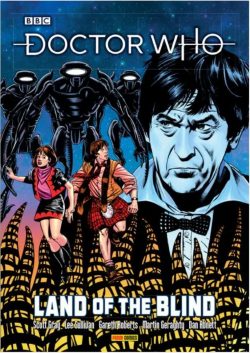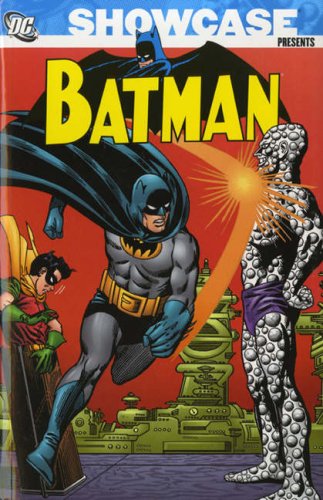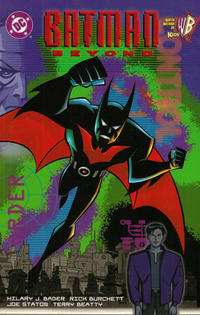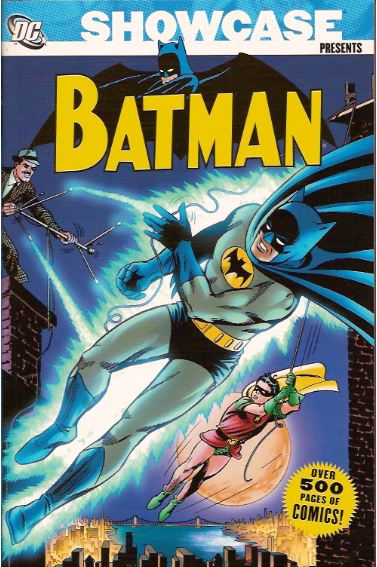
By Dick Wood, Nevio Zaccara, Alfredo Giolitti & various (IDW)
ISBN: 978-1-61377-922-4 (HB/Digital edition)
This book includes Discriminatory Content produced in less enlightened times.
Star Trek debuted on American televisions on September 8th 1966 and ran until June 3rd 1969: three seasons comprising 79 episodes. A moderate success, it only really became popular after going into syndication, running constantly throughout the 1970s. It was also sold all over the world, popping up seemingly everywhere and developing quite a devoted fanbase.
Being a third world country, Britain didn’t see the show until July 12th 1969 during the rocket fever surrounding the Apollo moon landings, when BBC One screened “Where No Man Has Gone Before” in black-&-white before proceeding to broadcast the rest of the series in the wrong order. “Arena” was the first episode screened in colour (November 15th 1969), but viewers didn’t care. We were all hooked anyway and many of the show’s catchphrases – many erroneous and some entirely fictitious – quickly entered the popular lexicon of the nation.
The series spawned a licensed, British-originated comic strip which ran in Joe 90, TV21 and TV21 and Valiant from the late 1960s into the 1970s. These have also been collected and I’ll get to them in the fullness of time and space.
In the USA, although there was some merchandising, things were a little less enthusiastically embraced. Even though there was a comic book – from “properties magnate” Gold Key and running for almost a decade after the show’s cancellation – authenticity at the start wasn’t really a watchword. Nor was immediacy or urgency an issue. In fact, only six issues were released during the show’s entire three-season run. Published between July 1967 and December 1968, they are all gathered in this first archive Star Trek…
Printing giant Whitman Publishing had been producing their own books and comics for decades through their Dell and Gold Key imprints, rivalling and often surpassing DC and Timely/Marvel at the height of their powers in sales and popularity. Famously Whitman never capitulated to the wave of anti-comics hysteria resulting in the crippling self-censorship of the 1950s and Dell Comics never displayed a Comics Code Authority symbol on their covers.
They never needed to: their canny blend of media and entertainment licensed titles were always produced with a family market in mind and the creative staff took their editorial stance from the mores of the filmic Hayes Code and the burgeoning television industry.
Just like the big and little screen, the product enticed but never shocked and kept contentious social issues implicit instead of tacit. It was a case of “violence and murder are fine, but never titillate”…
Moreover, the vast majority of their adventure comics’ covers were high quality photos or paintings – adding a stunning degree of veracity and verisimilitude to even the most outlandish of concepts for us wide-eyed waifs in need of awesome entertainment. The company seemed the only logical choice for a licensed comic book, and to be honest, these stories are cracking space opera yarns, even if they occupy an odd position in the hearts of older screen-dominant fans. In the UK, distribution of US comics was haphazard at best, but Gold Key Trek yarns were reprinted in our beloved and trusted hardback Christmas annuals. Nevertheless, the earliest ones bore little resemblance to what we’d seen on TV.
Our little minds were perplexed and we did wonder, but as the tales offered plenty of action and big sci fi concepts we just enjoyed them anyway.
Original British Star Trek yarns came in serialised comic-strip form, superbly illustrated and bearing a close resemblance to the source material. The feature only appeared as 2 or 3-page instalments in weekly anthologies, but was at least instantly familiar to TV viewers.
I discovered the answer to the jarring discrepancy, years later. Apparently scripter Dick Wood (a veteran writer who had worked on hundreds of series from Batman and the original Daredevil to Crime Does Not Pay and Doctor Solar, Man of the Atom) had not seen the show when commissioned to write the comic book iteration, and both he and Italian artists Nevio Zaccara – and latterly Alberto Giolitti – received only the briefest of outlines and scant reference materials from the show’s producers. They were working almost in the dark…
When you read these stories, you’ll see some strange sights and apparent contradictions to Trek canon lore, but they were all derived from sensible assumptions by creators doing the very best with what meagre information they had. If you’re likely to have your nostalgic fun spoiled by wrong-coloured shirts or Lasers rather than Phasers, think alternate universe or read something else. Ultimately, you are the only one missing out…
That’s enough unnecessary apologising. These splendidly conceived all-ages tales don’t deserve or need it, and even the TV wellspring was a constantly developing work-in-progress, as fan and occasional Trek scripter Tony Isabella reveals in his Introduction ‘These Are the Voyages…’
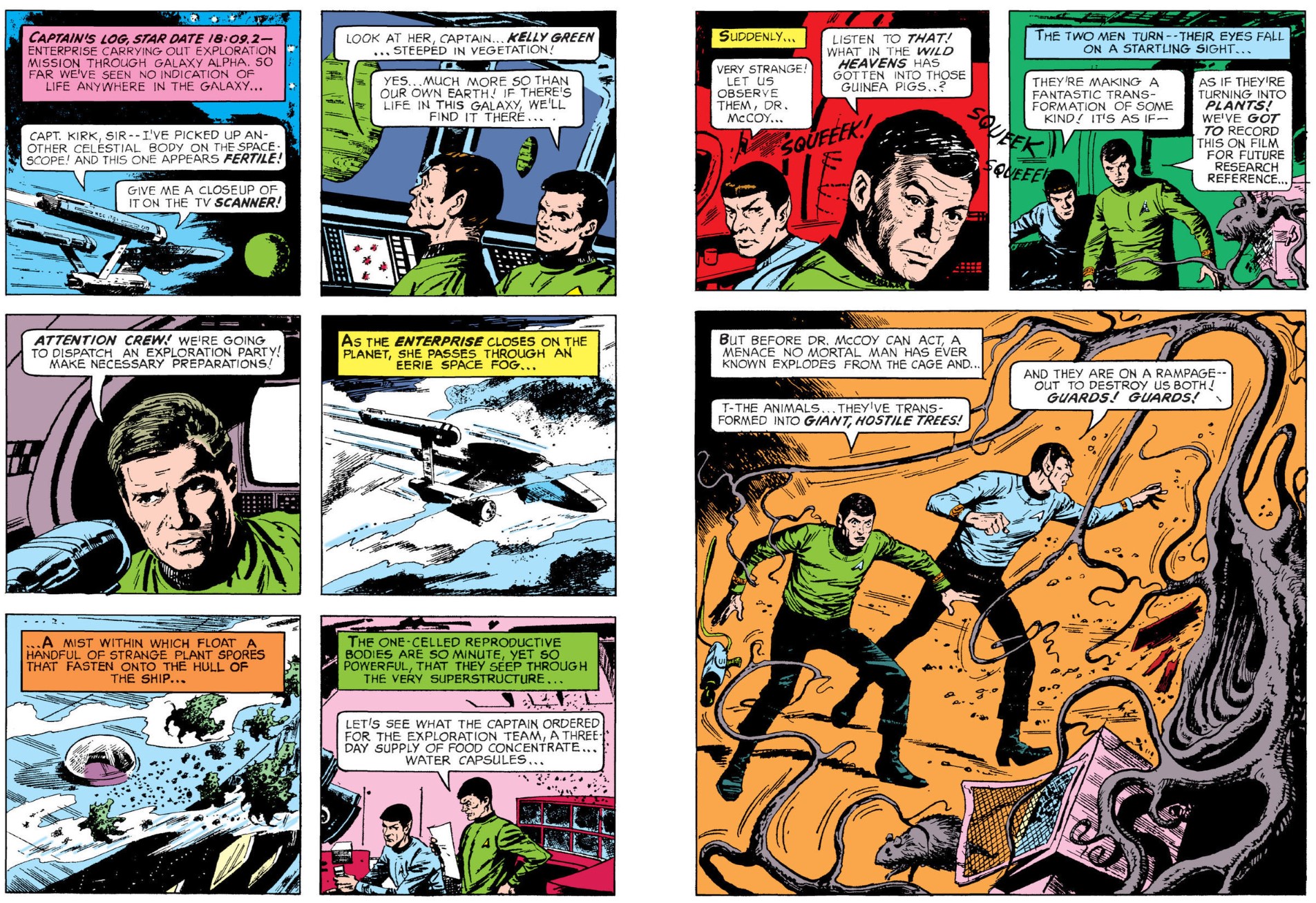
Accompanied by the stunning photo-collage covers and endpapers (an expensive rarity at the time outside Gold Key titles) the quirky collation of cosmic questing commences with ‘The Planet of No Return’ (by Wood & Zaccaria, from #1, July 1967) as the Enterprise enters a region of space oddly devoid of life and encounters predatory spores from a planet designated Kelly-Green. This is a world of horror where vegetative life contaminates and transforms flesh whilst mindlessly seeking to constantly consume and conquer. After the survivors of the landing party escape deadly doom and return to the safety of space, there is only one course of action Captain Kirk can take…
‘The Devil’s Isle of Space’ was released with a March 1968 cover-date and found the ever-advancing Enterprise trapped in a space-wide electronic net. The technology was part of a system used by an alien race to pen death-row criminals on asteroids, where they would be (eventually) executed in a truly barbarous manner. Sadly, it’s hard not to interfere in a sovereign culture’s private affairs when the doomed criminals hold Federation citizens hostage and want Kirk to hand his ship over to them…
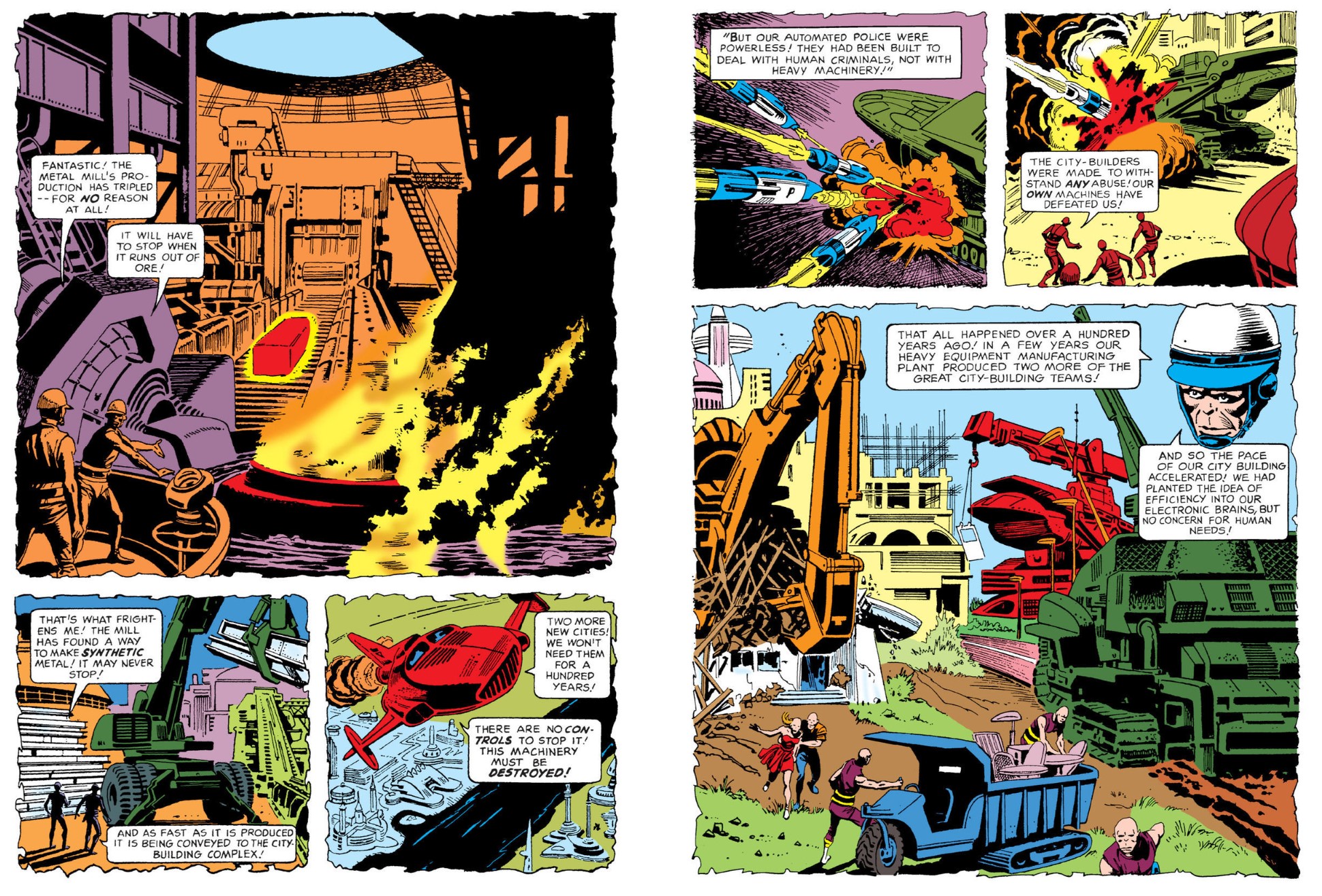
Bombastic. beguiling and spectacular, ‘Invasion of the City Builders’ (#3, December 1968) saw legendary Alberto Giolitti take the artistic reigns. Prolific, gifted and truly international, his work and the studio he founded produced a wealth of material for three continents; everything from Le Avventure di Italo Nurago, Tarzan, The Phantom, Mandrake, Flash Gordon, Zorro, Cisco Kid, Turok, Gunsmoke, King Kong, Cinque anni dopo, Tex Willer and dozens more. In England, the Giolitti effect enhanced many magazines and age ranges; everything from Flame of the Forest in Lion to Enchanted Isle in Tammy. His textural adeptness and gritty line-work added visual terseness and tension to the mix, as seen in his first outing here, as Enterprise crewmembers land on a planet where automated machines originally programmed to build new homes and roads have been out of control for a century. Forcing the organic population to the edge of extinction, the mechs build cities no one can live in over the soil they need to grow food. The machines seem utterly indestructible, but Mr. Spock has an idea…
Social commentary gave way to action and suspense when ‘The Peril of Planet Quick Change’ (June 1969) finds the explorers investigating a world of chimerical geological instability, only to see Spock possessed by beings made of light. These creatures use him to finally stabilise their unruly world, but once the crisis is averted, one of the luminous spirits refuses to exit the Vulcan and plans to make the body its own…
‘The Ghost Planet’ (September 1969) was fast approaching parity with the TV incarnation as Enterprise reaches a world ravaged by radiation rings. Its twin rulers are eager for the star men’s help in removing the rings, but don’t want them hanging around to help rebuild the devastated civilisation. A little quiet investigation reveals that most of the carnage is due to eternal warfare which the devious despots plan to resume as soon as the Federation ship destroys the radiation rings and leaves…
Wrapping up this initial TV treasure-trove is ‘When Planets Collide’ (December 1969): a classic conundrum involving two runaway worlds inexorably drawn to each other and mutual destruction. What might have been a simple observable astronomical event becomes fraught with peril when the Enterprise’s crew discover civilisations within each world: both of which would rather die than evacuate their ancient homes…
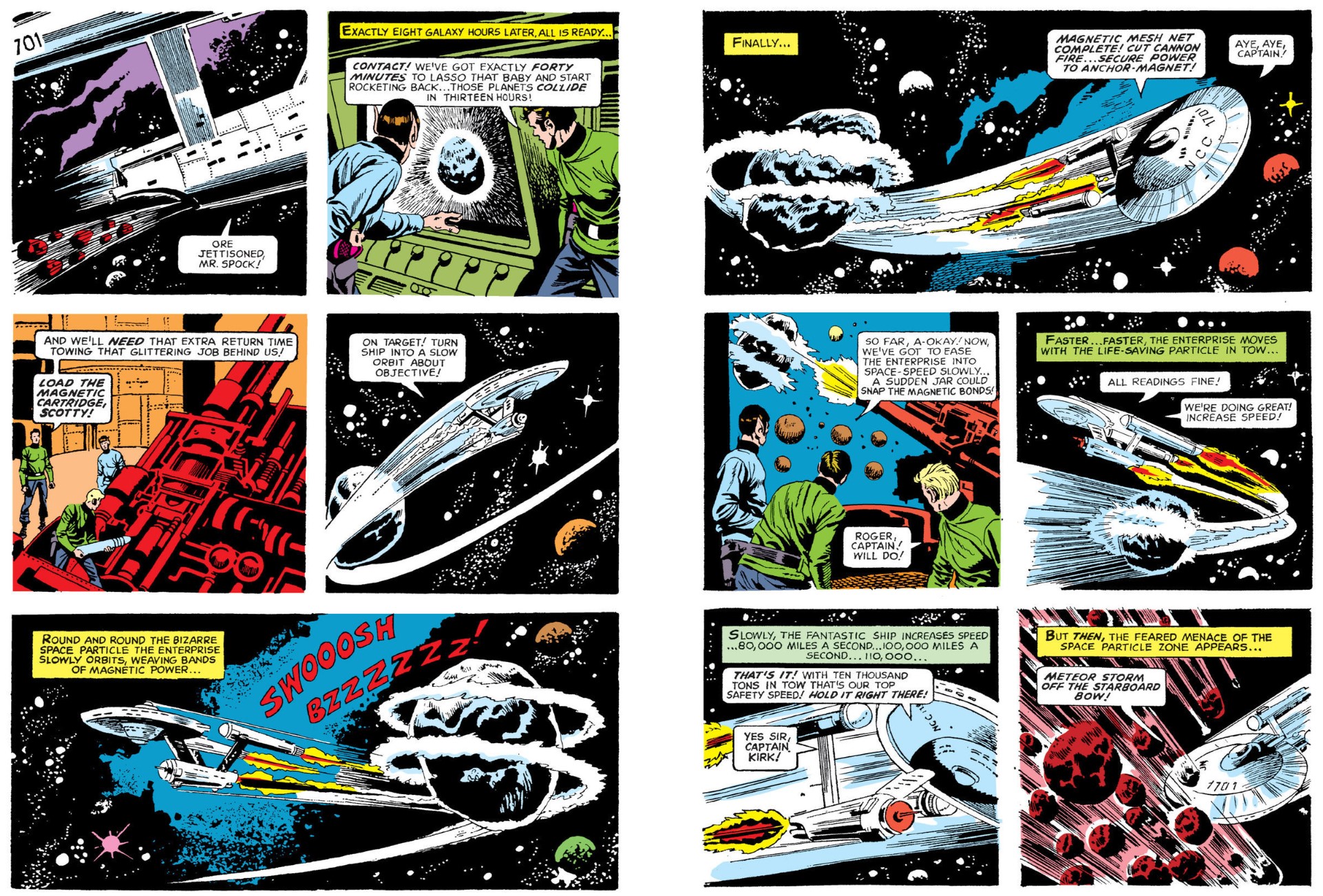
With time running out and lives at stake there’s only one incredible chance to save both worlds, but it will take all Spock’s brains and Kirk’s piloting skill to avert cosmic catastrophe…
Bold, expansive and epic, these are great stories to delight young and old alike and well worth making time and space for. Why not explore lost worlds and sagas of guaranteed merit via the comics wayback machine? You know the one: it’s the comic shop located on the Edge of Forever?

® and © 2014 CBS Studios, Inc. Star Trek and related marks are trademarks of CBS Studios, Inc. All Rights Reserved.
Today Finnish cartoonist Lars Jansson was born today in 1926. You can see his work in Moomin Volume 9.
Today in 1937, Archie Goodwin was born: a gentle genius and still the Nicest Man in Comics, of whom you can learn more and appreciate his subtle mastery by checking Tales of the Batman: Archie Goodwin.





















